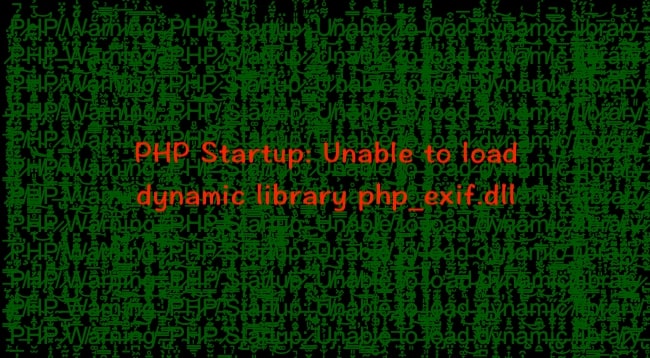網路上有人提到這個問題,整理了一下自己提出的回應寫成這篇提供參考。一般做法通常使用資料表紀錄人與權限的關聯,甚至是有群組和角色等更複雜的機制,在檢查是否具有權限時可能要 Join 許多 Table 來達成。而此篇文章則以不同的方式來設計,簡單的以位元的方式來表示使用者具有之權限,並使用 php 與 mysql 實作範例,範例不包含群組和角色等機制。
首先建立一權限資料表包含 index 欄位表示第幾個 bit,型別為 int;name 欄位表示權限的名稱,型別為 varchar,並建立一些權限,例如:
Table: authorities
| index | name |
|---|
| 1 | Authority1 |
| 2 | Authority2 |
| … | … |
bigint 版本
接著於使用者資料表包含一欄位表示具有之權限,例如 authority, 型別為 bigint unsigned,並建立一些使用者,例如:
Table: users
| id | authority |
|---|
| 1 | 7 |
| 2 | 1 |
| 3 | 18446744073709551615 |
Case 1
要檢驗使用者1是否具有 Authority2 權限邏輯如下:
1
2
3
4
| 二進位 十進位
使用者1: 0000 0111 (7)
Authority2: 0000 0010 (2)
AND: 0000 0010
|
AND 結果為 0000 0010,與權限位元一致,則表示具有權限。
Case 2
要檢驗使用者2 是否具有 Authority2 權限邏輯如下:
1
2
3
4
| 二進位 十進位
使用者2: 0000 0001 (1)
Authority2: 0000 0010 (2)
AND: 0000 0000
|
AND結果為 0000 0000,則表示不具有權限。
Case 3
要檢驗使用者1 是否具有 Authority1 和 Authority3 權限邏輯如下:
1
2
3
4
5
6
7
8
9
| 二進位 十進位
Authority1: 0000 0001 (1)
Authority3: 0000 0100 (3)
OR: 0000 0101
二進位 十進位
使用者1: 0000 0111 (7)
Authorities: 0000 0101
AND: 0000 0101
|
要同時判斷是否具有多個權限時,先將所有權限作位元運算之 OR,結果為 0000 0101;接著再與使用者權限作 AND,結果仍然為 0000 0101,則表示具有權限。
Case 4
要檢驗使用者2 是否具有 Authority1 和 Authority3 權限邏輯如下:
1
2
3
4
| 二進位 十進位
使用者2: 0000 0001 (1)
Authorities: 0000 0101
AND: 0000 0001
|
權限 OR 部分與 case3 相同,接著與使用者權限 AND 結果為 0000 0001,與權限位元不一致,則表示不具有權限。
由於 bigint 佔 64 個 bit,所以此版本最多支援 64 種權限,而此範例的使用者3 權限 18446744073709551615 相當於所有 bit 皆為 1,也就是具有所有權限。
實際的使用 PHP 實作
1
2
3
4
5
6
7
8
9
10
11
12
13
14
15
16
17
18
19
20
21
22
23
24
| <?php
$result = mysql_query('SELECT * FROM authorities');
while ($row = mysql_fetch_assoc($result))
$authorities[$row['name']] = 1 << ($row['index'] - 1);
$result = mysql_query('SELECT * FROM users');
echo "<pre>";
while ($row = mysql_fetch_assoc($result)) {
echo "user" . $row['id'] . ":\n";
var_dump(has_authority($row['authority'], $authorities['Authority1']));
var_dump(has_authority($row['authority'], $authorities['Authority2']));
var_dump(has_authority($row['authority'], $authorities['Authority4']));
var_dump(has_authority($row['authority'], $authorities['Authority1'] | $authorities['Authority3']));
var_dump(has_authority($row['authority'], $authorities['Authority1'] | $authorities['Authority4']));
echo "\n";
}
echo "</pre>";
function has_authority($user_authority, $authority)
{
return ($user_authority & $authority) == $authority;
}
?>
|
輸出
1
2
3
4
5
6
7
8
9
10
11
12
13
14
15
16
17
18
19
20
| user1:
bool(true)
bool(true)
bool(false)
bool(true)
bool(false)
user2:
bool(true)
bool(false)
bool(false)
bool(false)
bool(false)
user3:
bool(true)
bool(true)
bool(true)
bool(true)
bool(true)
|
varbinary 版本
使用者資料表之 authority 型別改成使用 varbinary,以下使用十六進位制表示
| id | authority |
|---|
| 1 | 01 |
| 2 | 07 |
| 3 | FF FF FF FF FF FF FF FF |
| 4 | FF FF FF FF FF FF FF FF 01 |
邏輯與 bigint 相同,但是此版本可超過 64 bit 長度的限制,可自訂 varbinary 長度,換成 blob 型別亦可。
實際的使用 PHP 實作
1
2
3
4
5
6
7
8
9
10
11
12
13
14
15
16
17
18
19
20
21
22
23
24
25
26
27
28
29
30
31
32
33
34
35
36
37
38
39
40
41
42
43
44
45
46
47
48
49
50
| <?php
$result = mysql_query('SELECT * FROM authorities');
while ($row = mysql_fetch_assoc($result))
$authorities[$row['name']] = $row['index'];
$result = mysql_query('SELECT * FROM users');
echo "<pre>";
while ($row = mysql_fetch_assoc($result)) {
echo "user" . $row['id'] . ":\n";
var_dump(has_authority($row['authority'], $authorities['Authority1']));
var_dump(has_authority($row['authority'], $authorities['Authority2']));
var_dump(has_authority($row['authority'], $authorities['Authority4']));
var_dump(has_authority($row['authority'], $authorities['Authority65']));
var_dump(has_authority($row['authority'], array($authorities['Authority1'], $authorities['Authority3'])));
var_dump(has_authority($row['authority'], array($authorities['Authority1'], $authorities['Authority4'])));
echo "\n";
}
echo "</pre>";
function has_authority($user_authority, $indexes)
{
if (!is_array($indexes))
$indexes = array($indexes);
foreach ($indexes as $index)
{
$byte_index = ceil(($index) / 8) - 1;
$authority = 1 << (($index - 1) % 8);
if (isset($authorities[$byte_index]))
$authorities[$byte_index] |= $authority;
else
$authorities[$byte_index] = $authority;
}
foreach ($authorities as $byte_index => $authority)
{
$byte = ord($user_authority[$byte_index]);
if ($byte == 0)
return false;
if (($authority & $byte) != $authority)
return false;
}
return true;
}
?>
|
輸出
1
2
3
4
5
6
7
8
9
10
11
12
13
14
15
16
17
18
19
20
21
22
23
24
25
26
27
28
29
30
31
| user1:
bool(true)
bool(true)
bool(false)
bool(false)
bool(true)
bool(false)
user2:
bool(true)
bool(false)
bool(false)
bool(false)
bool(false)
bool(false)
user3:
bool(true)
bool(true)
bool(true)
bool(false)
bool(true)
bool(true)
user4:
bool(true)
bool(true)
bool(true)
bool(true)
bool(true)
bool(true)
|



